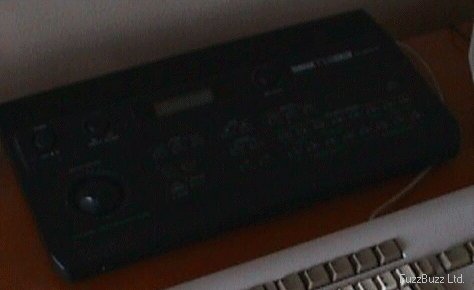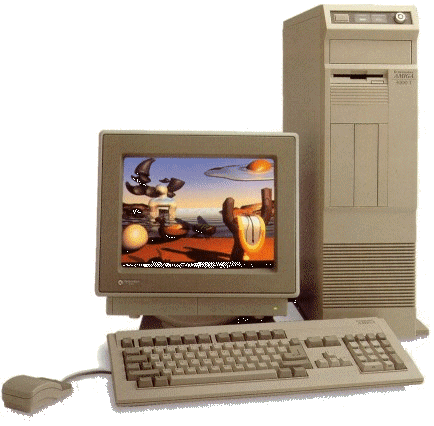Would you like to make this site your homepage? It's fast and easy...
Yes, Please make this my home page!

This is a screen shot of a program called OctaMED. It is a tracker, which
is the name given to the music programs that were used to write game music in
the late nineteen eighties. Instead of lines or tracks going across horizontally
the tracks scroll down, usually containing 64 lines. The letters on the tracks
which there are four of, represent the samples being used, i.e. the pitch of the note
and volume. Many different effects can be applied by changing the numbers, time stretching,
volume control, switching the sample on and off. Even though it may seem complex, when
explained in words, it is the easiest form of making music and quickest, but yet
profession results can be achived. It is best suited for dance music though. There is a
large library of songs made with this program, ranging from Jungle, Hardcore to Classical.

This is an image of the Yamaha TG-33 module, that is used for music production. It is controlled
OctaMED, by the use of MIDI. It gives 16 tracks of 16 Bit sound, with realtime effects such as; Echo,
and Filter, it also has 128 octaves, which gives a high range of low and high notes. This model has
been out of production for four years, and costs around 320 uk pounds second hand. The types of sounds
it is best suited for are strings, piano, and bass.

The picture above is of an Amiga 3000, one of the computers used for writing the music. Amiga computers are
not MS Windows based or System 7 i.e. Macintosh, but are based loosely on Unix workstations. The main CPU is a
based on the Motorola series of 68x0s. The main operating system is Workbench, a graphical based interface, if you
wish to learn more, head towards Amiga International.

| 


